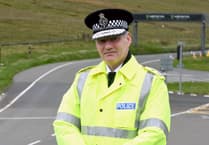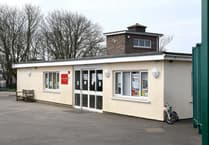This week, Food & Farming is looking at some of the questions we should be asking ourselves about food and the environment in 2023.
So let’s get this out there right away: agriculture does contribute to global warming and both farmers and consumers do need to play their part in helping to reduce this. But how do we go about this?
When the eminent climate scientist, Professor Myles Allen, gave a talk via video link last month to farmers and politicians on the island it raised a lot of issues and even more questions.
The main emissions from agriculture which affect global warming are methane, from livestock, and nitrous oxide, from fertiliser. Methane is the highest of these but Professor Allen’s research has found that, unlike CO2 which stays in the atmosphere, the effects of methane are comparatively short lived. So reducing methane emissions soon has a beneficial effect on global warming.
Manx NFU president, Ean Parsons, said: ‘Professor Allen gave a detailed understanding and analysis of livestock methane emissions in the carbon cycle. With a herd reduced over the last 20 years, as we have in the Isle of Man, this will have had a cooling effect, and the Global Warming Potential (GWP) that is left in the atmosphere after the breakdown of the methane will be effectively neutral, as the animals have been fed grass-based diets that have sequestered carbon during [the grass] growth, while producing food for people.’
So surely it is a good thing that livestock numbers have reduced on the island?
At first sight, yes, this is a good thing all round if it means that people are being more discerning: eating less meat, but better quality meat, locally sourced.
If, however, it actually means that people are eating just as much red meat, but buying cheap imported meat, then it’s actually adding to global warming somewhere else. And to food miles.
There has never been a ban on dairy products being imported into the island and the decision on whether or not to buy local is purely down to consumer choice.
How much have the livestock numbers reduced on the island?
We looked at the Government Agriculture Census figures for cattle and sheep. (We have not included pigs as they have a different digestive system and do not contribute to methane emissions in the same way.)
In 2009 there were nearly 149,000 sheep and just under 34,000 cattle (both dairy and beef).
In 2022 there were 26,500 cattle and just under 124,000 sheep.
Why have livestock numbers reduced on the island?
Going back to the 1990s very little meat was allowed to be imported into the Isle of Man. The meat sold by butchers and supermarkets was virtually all local. The EU had made a special exemption to its trading laws, called a derogation, which allowed the island to do this.
In December 2010, derogation granted by the EU, came to an end.
Supermarkets and butchers were then free to import meat from wherever they chose and many shoppers were happy to buy the cheapest available. This clearly had an effect on the numbers of livestock that farmers were rearing.
It also obviously had an effect on the price of Manx meat: as less was being produced it became more of a premium product and comparatively more expensive.
It also impacted on the Meat Plant, which had to look for new export markets, as the local market shrank.
So now we’re no longer in the EU why can’t we limit meat imports again?
This is a good question. The island now has ‘third country’ status in its dealings with the EU and there has been some suggestion that limiting meat imports would mean we would not be able to export meat but this never really been fully justified or explained.
Another obvious answer is that the big retailers on the island would probably be very much against it. And clearly at a time when there is pressure on households due to already rising energy and food prices, it would be wrong to limit consumers’ ability to buy a cheaper product.
How do Government payments to farmers help the environment and support our food security?
This is an interesting question because these have also had an impact on livestock numbers on the island.
In 2008 a single-farm payment model was introduced on the island. Delivery has continued through the Countryside Care Scheme (CCS) and latterly the Agricultural Development Scheme (ADS). All these schemes were based on the amount of acreage, rather than what was being done with it. It led to the increase in empty fields which was widely commented on at the time and also played a part in reducing livestock numbers. It was also not unversally popular with farmers.
The newest Government payment system, The AgriEnvironment Scheme, rewards farmers for farming in a way which benefits the environment.
There were some teething issues surrounding its implementation in April 2021 but it has been generally welcomed by farmers because they were already doing most of the things covered by the scheme.
It does not however encourage food production or food security.
What do the farmers think?
Clearly, recent events have brought home how quickly the global supply chain can be affected and it is now time to look at how food production on the island can be supported without damaging the environment.
Farmers take very seriously their role as guardians of our landscape and they have a vested interested in keeping soil healthy and maintaining a healthy biodiversity.
A spokesperson for the Manx NFU said:
For the agricultural sector, the science behind GWP gasses identifies the value of local produce, not just providing essential food security and huge benefits to our local economy, but delivering our net zero and biodiversity credentials.
Now we need work to begin on measuring current output accurately and meaningfully, getting that marker in the sand so that we can establish baseline data, and guiding what we need to achieve next. The agricultural sector is ready and willing to begin this work, and can contribute significantly to Government ambitions, but it will need funding. Without it there can be no development and advancement of our collective goals.’

.jpeg?width=209&height=140&crop=209:145,smart&quality=75)



Comments
This article has no comments yet. Be the first to leave a comment.